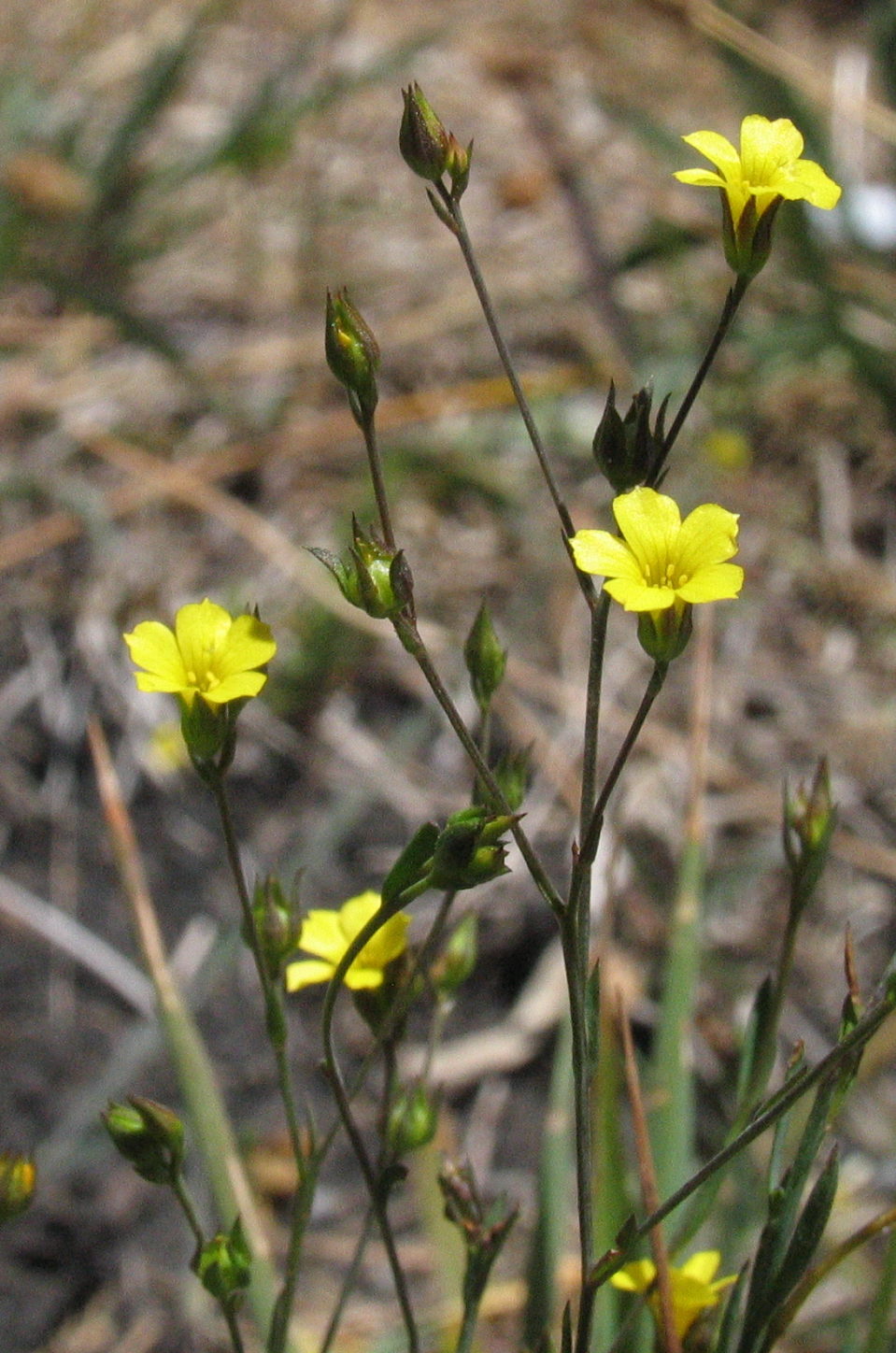Linum trigynum
L. French FlaxGlabrous annual herb, 10–70 cm high; stems erect or ascending, unbranched or few-branched mainly near base. Leaves linear to linear-lanceolate or narrow-elliptic, 5–20 mm long, 1–2.5 mm wide, acuminate, bases decurrent, margins entire, glabrous. Inflorescences loosely corymbose; pedicels slender, erect, to c. 5 mm long. Sepals lanceolate to ovate, 3–4 mm long, margins glandular-ciliolate; petals obovate, 4–6 mm long, yellow; anthers yellow; styles free, stigmas capitate. Capsule 2–3 mm diam., beaked; seeds 1–2 mm long, brown. Flowers mostly Sep.–Feb.
VVP, VRiv, GipP, OtP, WaP, CVU, DunT, EGU, HSF, HNF, OtR, Strz. Naturalised all States except NT. Native to southern Europe and the Mediterranean but widely naturalised elsewhere. Widespread but rarely common, found in disturbed sites in higher-rainfall parts of the State.
Jeanes, J.A. (1999). Linaceae. In: Walsh, N.G.; Entwisle, T.J., Flora of Victoria Vol. 4, Cornaceae to Asteraceae, pp. 121–124. Inkata Press, Melbourne.
 Spinning
Spinning




